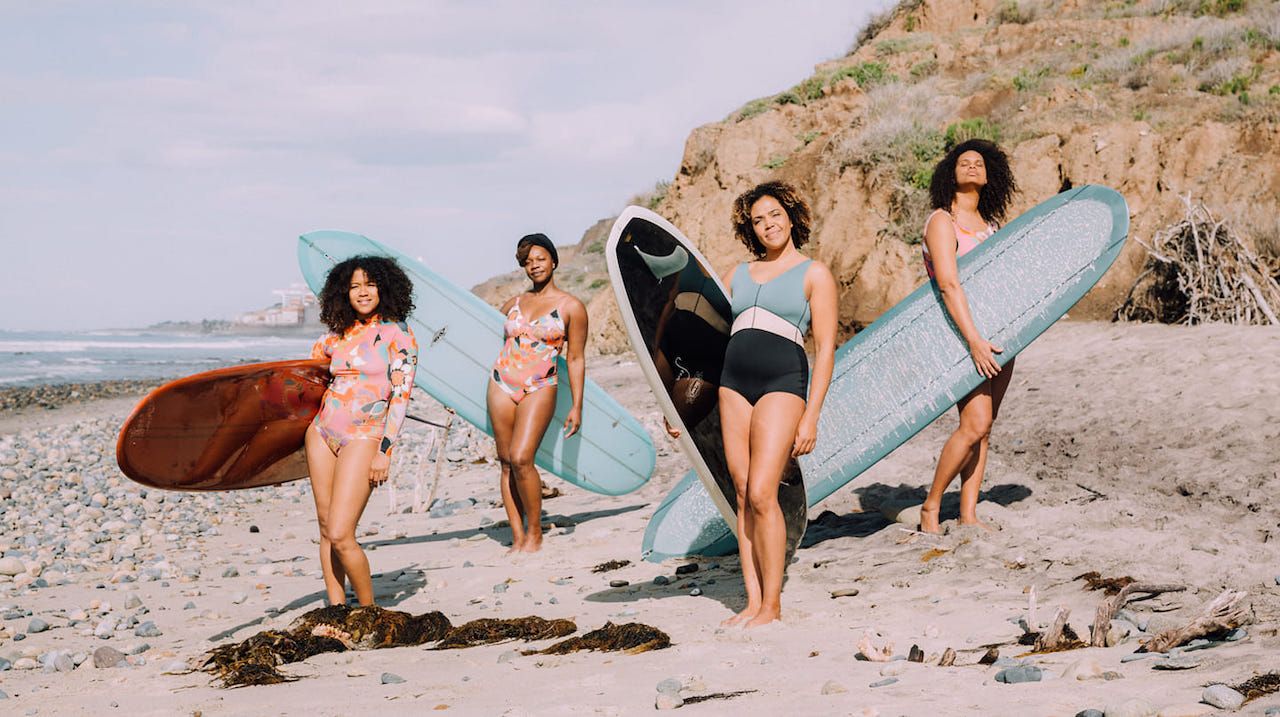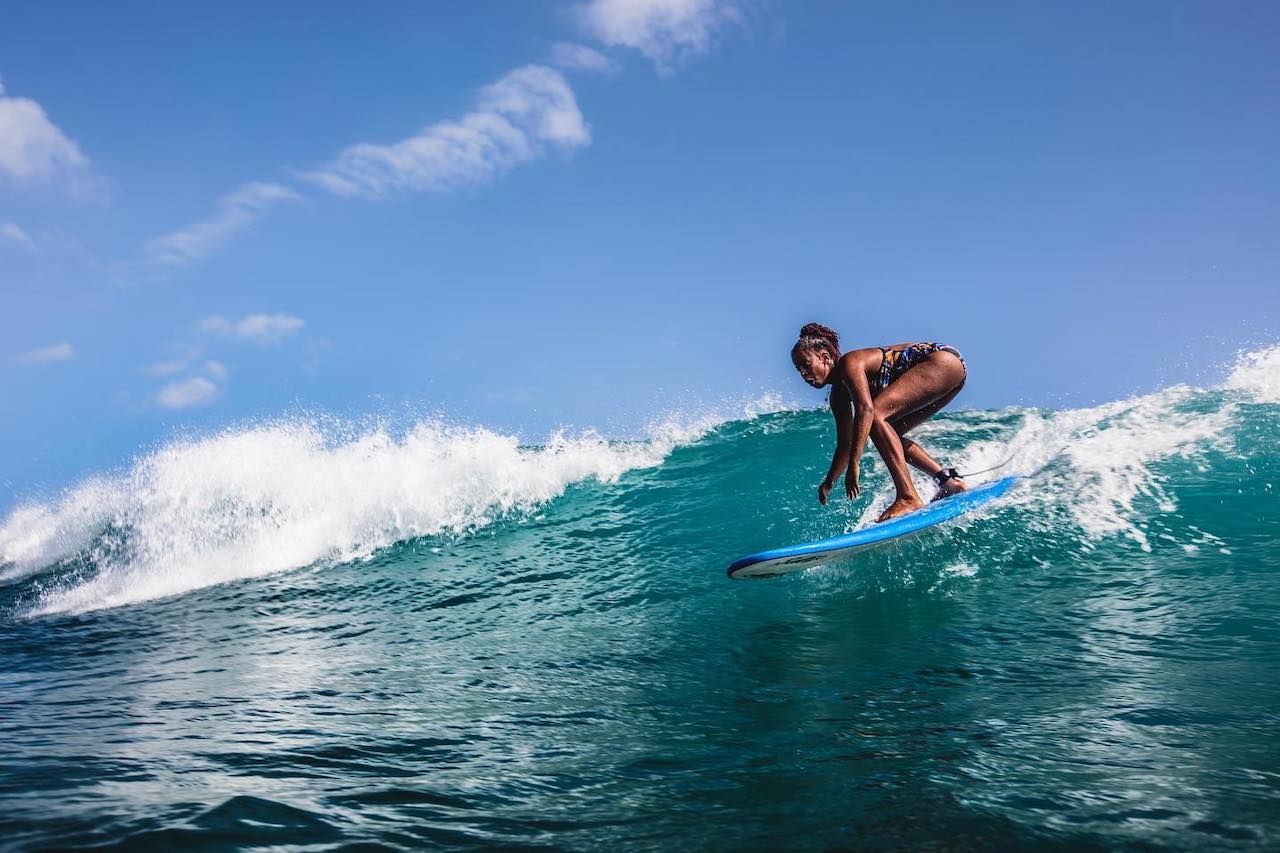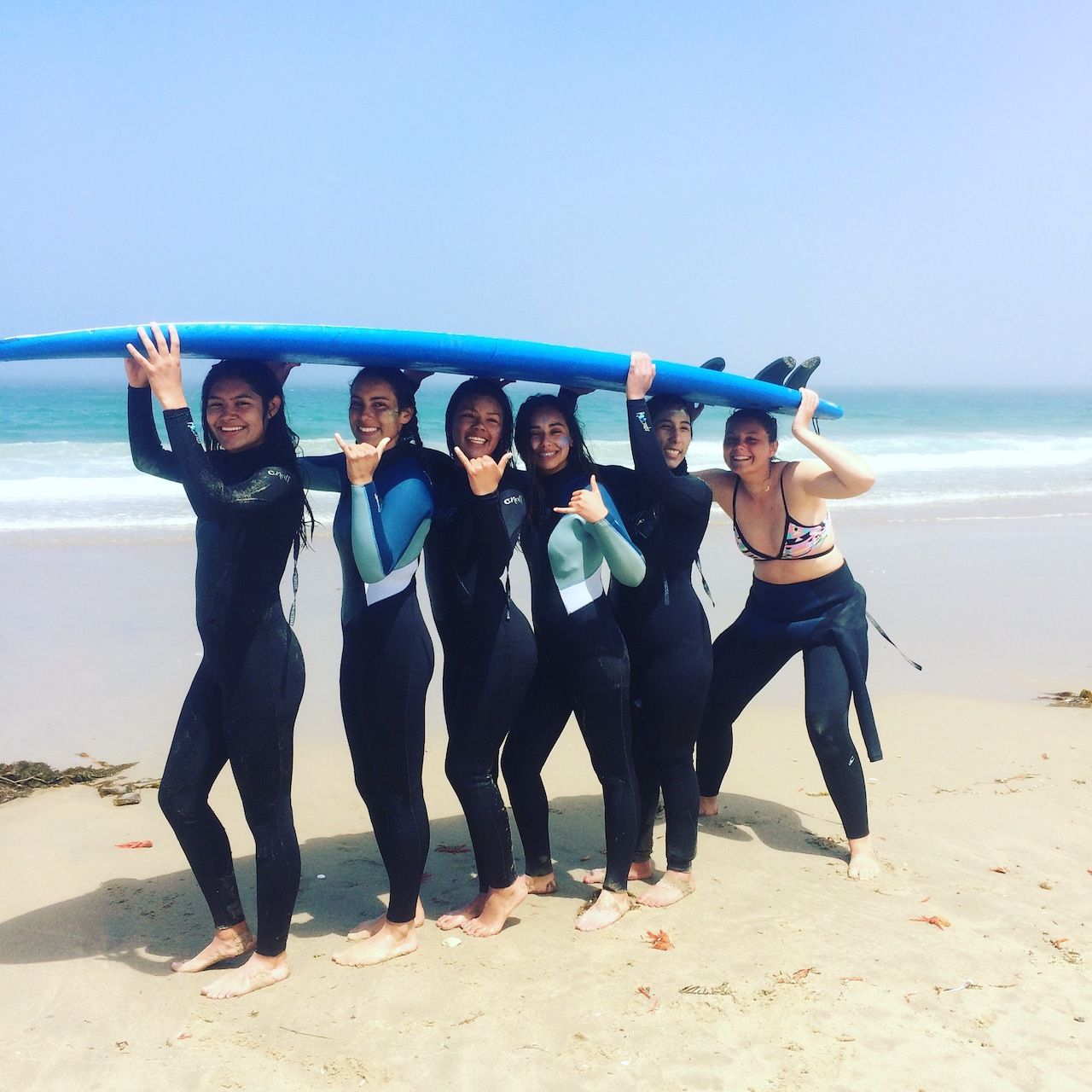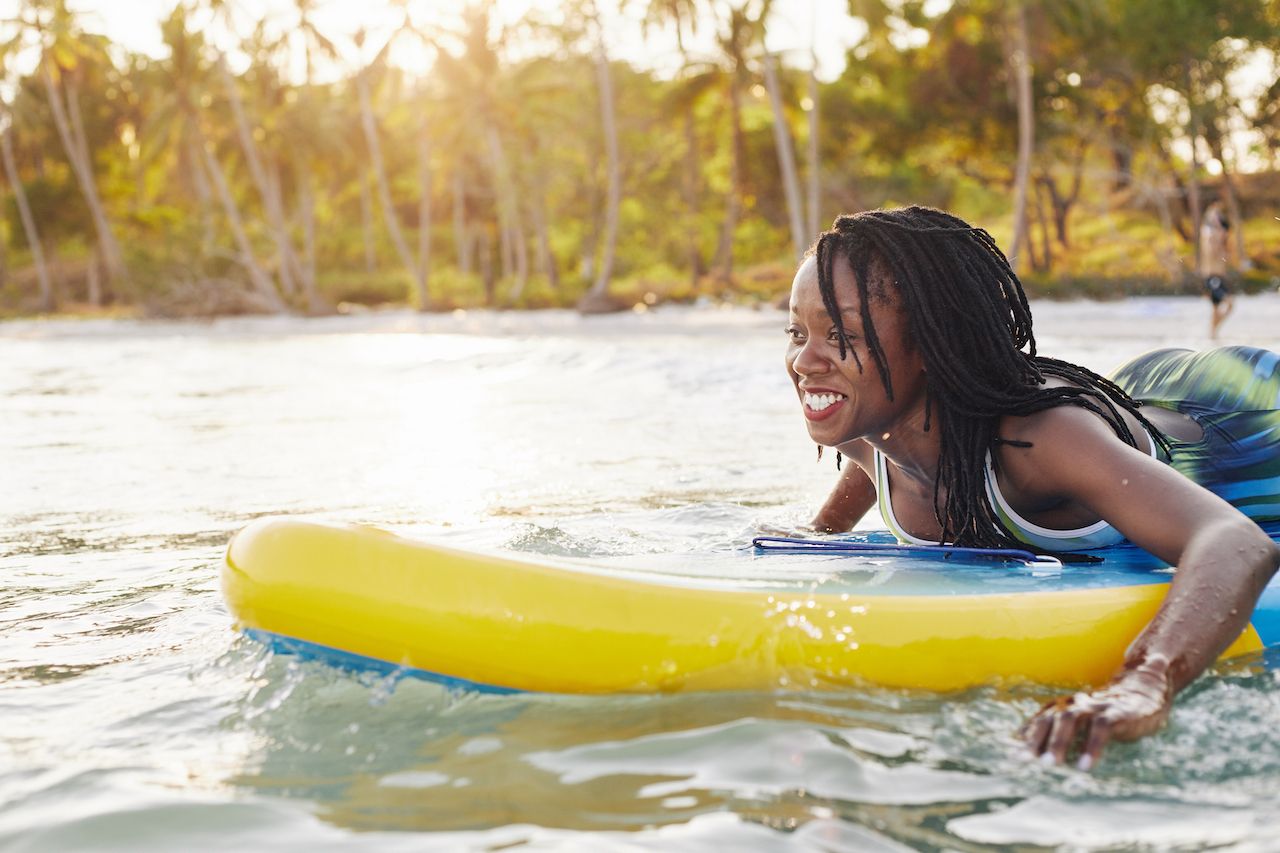When Dionne Ybarra was a young girl growing up in a Mexican farming community of East Salinas, she remembers the occasional trips her family would make to the beach 20 miles away from their home in Central California. While she enjoyed playing in the sand, the ocean itself was something to be feared. It was not a part of her Mexican family’s culture, and it never occurred to her then that it could become part of her own.
Even when she married a surfer, Ybarra herself didn’t take to the waves. After a divorce, Ybarra says she taught herself to swim and, eventually, at the age of 37, learned to surf. The experience encouraged Ybarra to start The Wahine Project, which teaches other Latina girls to discover the ocean and learn to surf.





